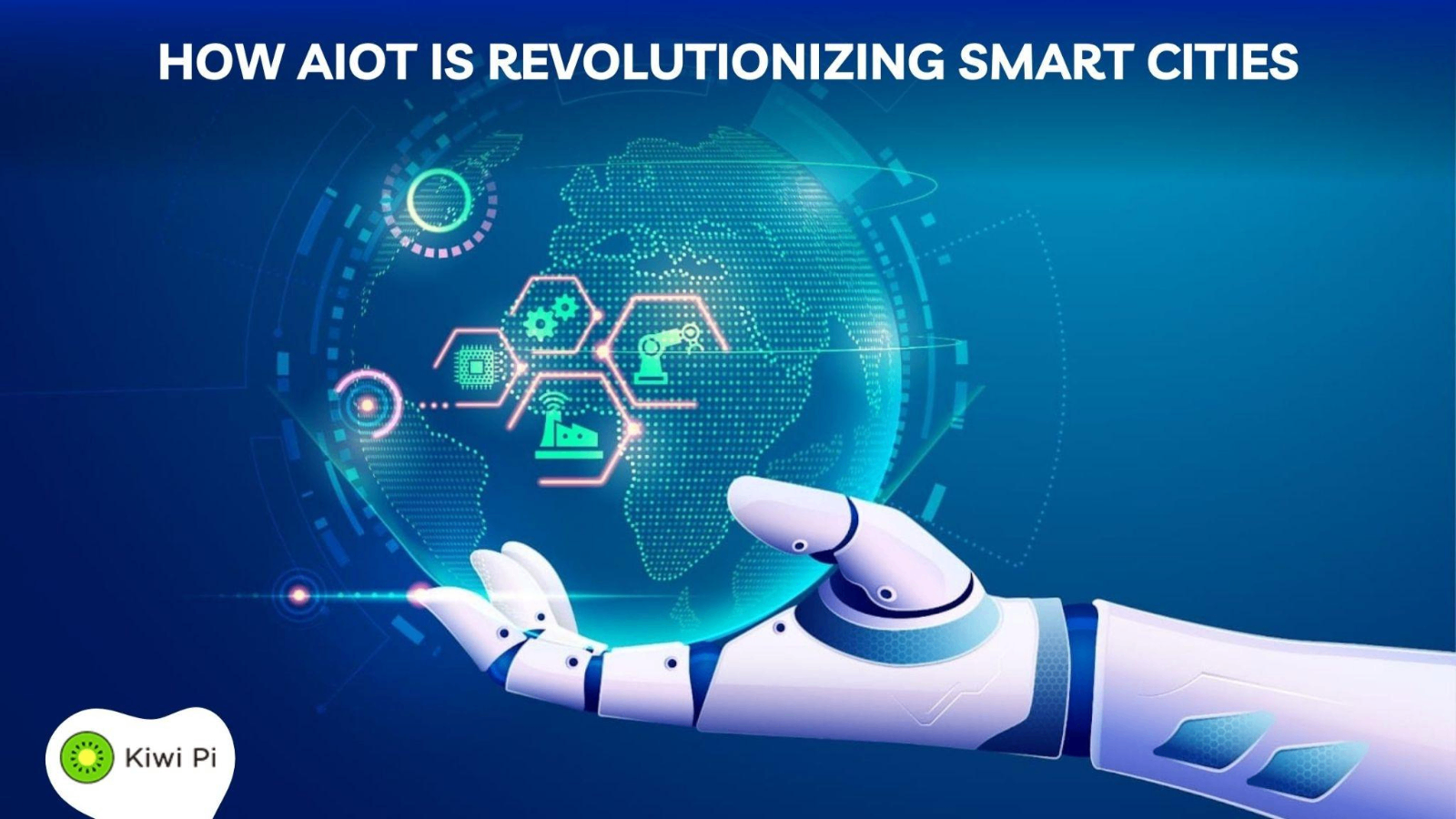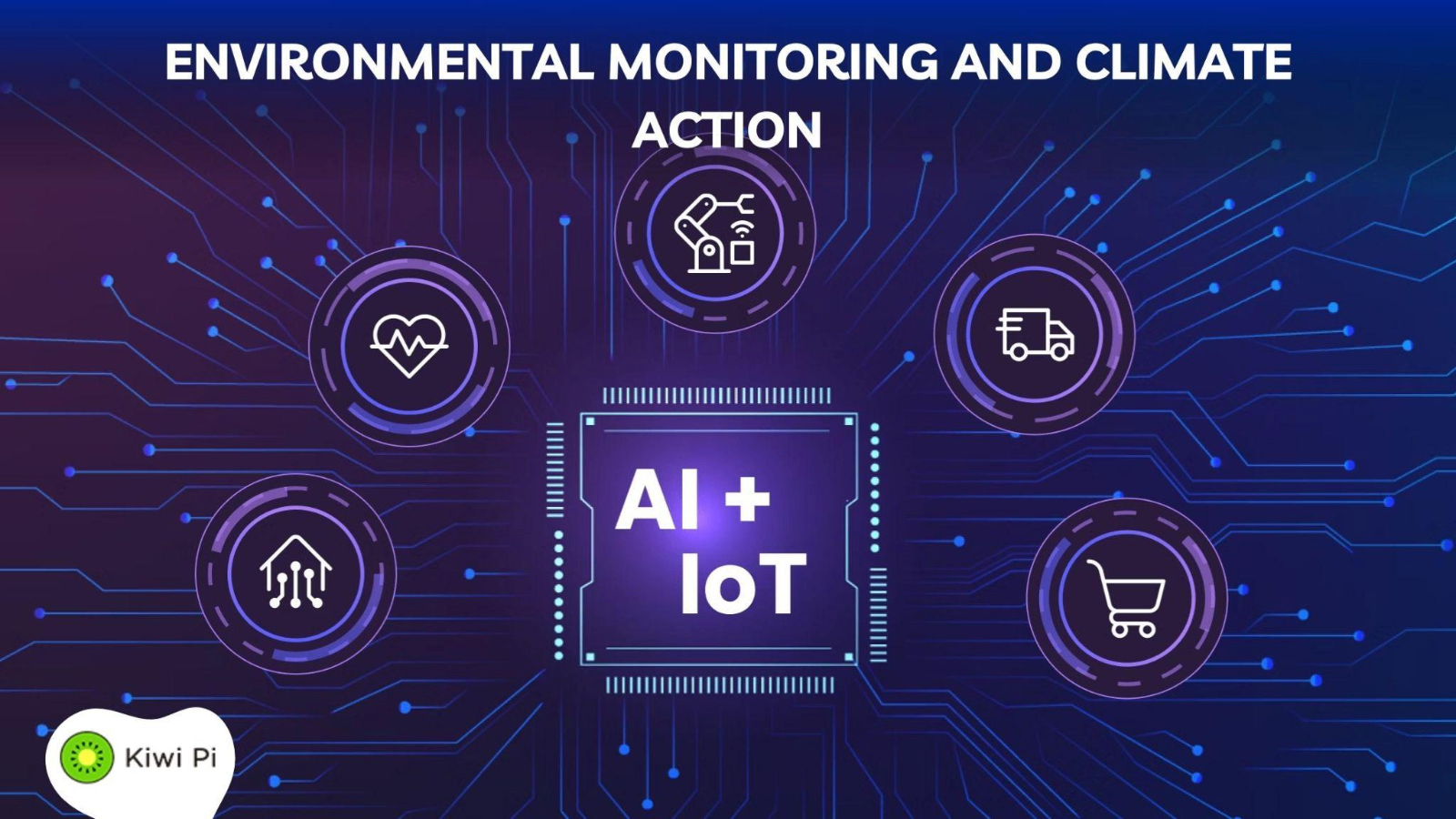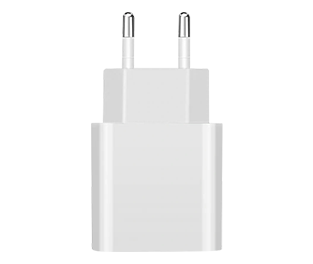
Solution
How AIoT is Revolutionizing Smart Cities
How AIoT is Revolutionizing Smart Cities

No longer are cities built from scratch, but instead are ‘built’ by sensing, evolving, and responding to needs. Smart cities and urban areas transform into dynamic ecosystems that adapt in real-time AIoT (Combination of Artificial Intelligence and the Internet of Things) Systems. They are brought to life by responsive sensors and smart systems that are connected to the entire city’s infrastructure. Advanced Robotics, powered by embedded computing technology from companies like Kiwi Pi, improves mobility, infrastructure, and citizen services within urban areas.
What Is AIoT and Why Does It Matter for Urban Transformation
AIoT results from combining AI with the Internet of Things. It enables smart sensing, edge computation, and connectivity at varying levels of hierarchy. IoT links devices across a network, whereas AIoT provides the requisite intellect for making split-second and actionable decisions. Picture the AIOT as the city’s neural system: capable of optimizing procedures in real time. After nearly 16 years of supporting IoT AI development, Kiwi Pi empowers living technologies by providing scalable systems realized through Rockchip processors.
Real-Time Urban Mobility and Traffic Optimization
Smart parking, congestion prediction, and dynamic routing are examples of AIoT-enabled systems that enhance traffic management. Traffic mobility and sensor-based traffic control minimize emissions and congestion. Please scroll down to find out how Kiwi Pi deals with the issue of urban transport responsiveness with their Rockchip edge AI systems. Urban transport requires real-time responsiveness, which is delivered by Kiwi Pi's systems. Their advanced embedded systems process large amounts of data at low latency, which is required to provide real-time responsiveness. How does AIoT reduce traffic congestion and carbon emissions? By allowing lights, vehicles, and infrastructure to communicate with one another. Visit kiwipi.com to understand better how Kiwi Pi deals with transportation AI.
Orange Pi RK3588
The 5 Plus and 5 Max are examples of Orange Pi RK35888 boards, which provide real-time edge AI processing important for urban mobility and traffic optimization. “Rockchip’s SoC RK35888 with an octa-core ARM CPU, Mali-G610 GPU, and 6 TOPS NPU provides the required computation power, making intelligent traffic monitoring, vehicle recognition, congestion prediction, and adaptive signal control with AI-powered ultra-low latency processing possible.” Smart traffic controllers can take full advantage of the provided features such as 32GB LPDDR5 RAM, dual 2.5GbE Ethernet, and even 8K video processing. These boards are additionally useful for Wi Fi 6E, PCIe NVMe, a variety of I/O interfaces, and advanced AI-powered surveillance systems. Operating systems Android, Ubuntu, and Debian allow for flexible and scalable usage, providing advanced multi-tiered smart public transportation systems.
Public Safety and Emergency Response
AIoT improves safety through emergency coordination, crowd behaviour monitoring, and surveillance monitoring analytics. Smart surveillance is made possible in busy urban areas, protests, festivals, and other load video processing devices using edge AI by Kiwi Pi. Crime, threat monitoring, and detection can be done more efficiently and faster when artificial intelligence and the Internet of Things are integrated into a city. Kiwi Pi's rugged computing platforms allow the integration of 24/7 safety systems that function in high-risk zones. Their technology guarantees the efficiency, scale, and reliability of AIoT applications in public safety systems.
Environmental Monitoring and Climate Action

Policies can be automated with the help of AIoT and smart sensors that monitor air pollution, noise, and even water quality. Environmental monitoring is made possible through compact edge systems from Kiwi Pi, which incorporate green infrastructure with actionable intelligence. Their boards, which are powered by Rockchip, are ideal for off-grid deployments as they provide off-grid energy-efficient processing. Can the AI Internet of Things transform cities into greener ones? Yes, it can. Through Kiwi Pi’s technology, city administrators can monitor ecological changes in real-time, empowering them to take action before getting hit with pollution, flooding, or heatwaves.
Smart Waste Management and Utility Optimization
Classic problems like overflowing waste collection centers and inefficient collection routes are now a thing of the past because of AIoT-integrated waste systems. The amount of waste and carbon footprints can easily be minimized through smart bins, along with optimization of routing in real-time to curb access to carbon footprints and waste. Kiwi Pi provides edge hardware that makes it possible, allowing for ease in waste sorting, landfill load prediction, and sensor data aggregation.
Connected Public Healthcare and Accessibility
Wellness ecosystems are burgeoning from smart cities with real-time condition monitoring, remote diagnostics, and AIoT-integrated smart alert systems. Public health kiosks, mobile clinics, and telemedicine hubs are made possible by Kiwi Pi’s embedded systems, which enable proactive care. Their edge platforms are capable of powering family-physician-like chronic disease monitoring, such as kidney health, directly from community centers.
Citizen Experience: From Passive Data to Active Participation
Cities are controlled with a top-down military structure. This must evolve to participatory urbanism. With AIoT, citizens have the ability to report infrastructure problems, track updates, and even check repair status and receive updates. Smart transit apps are an example of platforms that adapt to the inputs given by a rider. Responsive platforms are made possible by Kiwi Pi’s secure, low-latency edge systems. The combination of AI and IoT enables residents and city systems to co-create better outcomes.
Governance and Policy: The Backbone of AIoT Cities
Civic trust, data governance, and transparency form the ethical backbone of AIoT. “Civic technology” and “transparent AI” are not buzzwords, but rather, the very core of responsible urban innovation. Kiwi Pi endorses edge accountability, with specific regard to privacy, ensuring data is processed where it is needed. Who owns the data in an AIoT city? That is a central question, and Kiwi Pi assists cities in designing an infrastructure that utilizes intelligence while respecting privacy.
Challenges in Scaling AIoT Across Cities
While promising a smog-free future, AIoT also presents real challenges in scaling it: infrastructure gaps, cybersecurity risks, and fragmented standards. Will AIoT help bridge the digital divide, or widen it? Kiwi Pi solves this by providing scalable edge systems designed for dense cities, as well as underserved areas. Their emphasis on unified protocols, sensor fusion, and modular structures enhances ease of interoperability.
The Future: AIoT-Driven Autonomous Cities
Envision a city that not only self-repairs its roads, but also reroutes traffic during inclement weather while forecasting energy demand. With the power of AIoT, we achieve self-repairing infrastructure, autonomous intra-city traffic, as well as ambient intelligence. Kiwi Pi is at the cutting edge of self-regulating cities, and the answer to whether they will exist is being constructed today. Kiwi Pi, equipped with Rockship-based systems, is constructing for the future by providing edge real-time computing that helps deliver the autonomous urban intelligence needed to transform vision into reality.
AIoT is Not Just a Tool—It's the Urban Engine of the Future

With the help of AIoT, cities expand, heal, and transform without unrestricted limits. Be it for agriculture or urban development, AIoT now completely reshapes the way we envision life for advanced cities. This is no longer a tool but a prerequisite for nations looking to evolve. Kiwi Pi and their edge-compatible Rockchip modules aid in the bottom-up elevation of infrastructure AI, ensuring immediate and omnipotent impact. The ones who develop architecture with intelligent design integrated are the ones who control the future.


